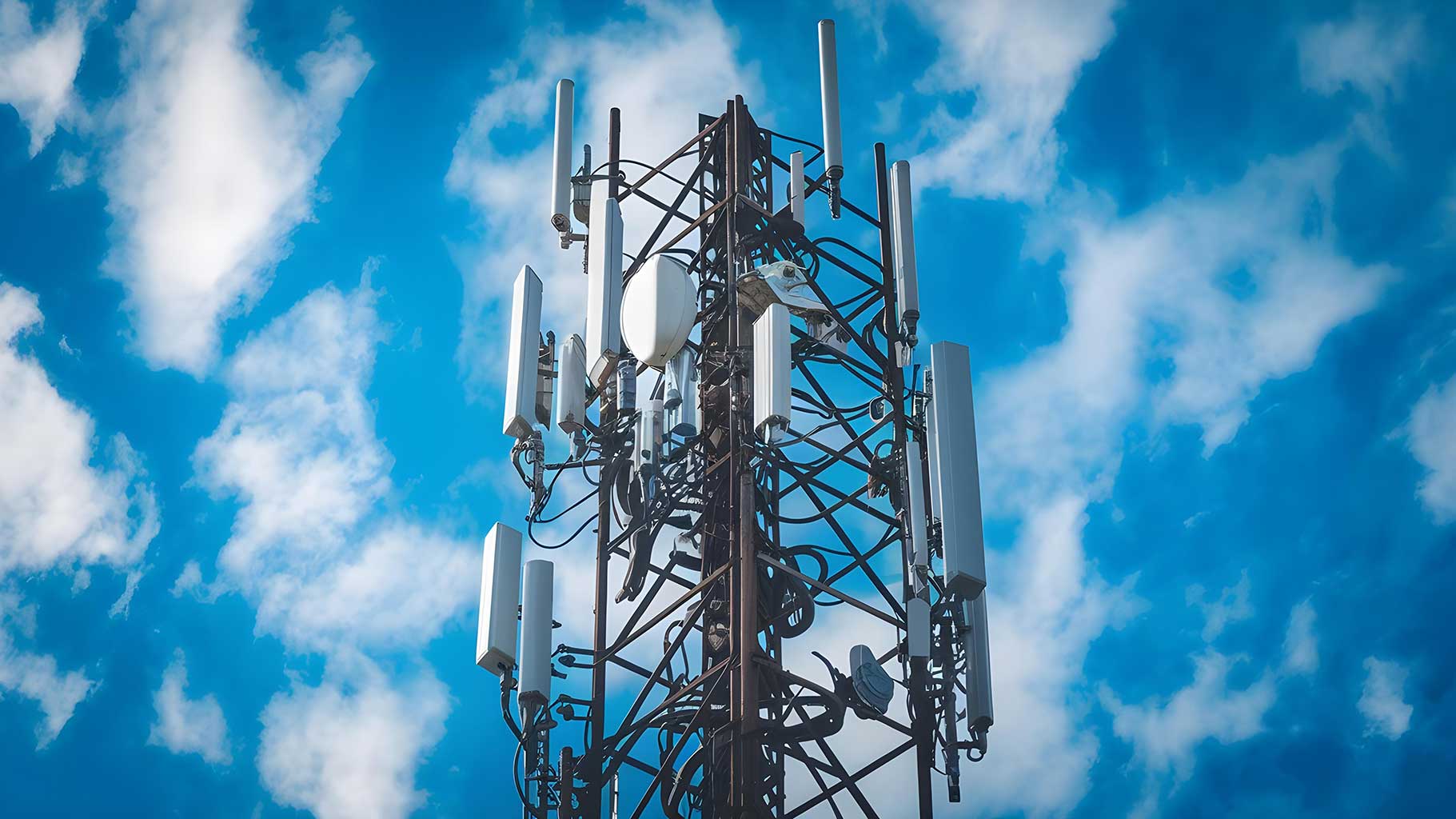Modernizing the Grid with 5G Technology for a Safer and More Reliable Future
Modernizing the Grid with 5G: SCE and Nokia Drive California’s Clean Energy Future

As California works towards its carbon neutrality goal for 2045, Southern California Edison (SCE) and Nokia have unveiled the electric industry’s first private 5G Field Area Network (FAN). This innovative network technology is designed to make the power grid safer, more reliable, and fully adaptable to California’s ambitious climate targets.
5G Field Area Network: Revolutionizing Grid Communication
The 5G FAN enables seamless communication between equipment, power lines, and substations, revolutionizing how the grid operates. SCE’s modernization efforts incorporate this secure, scalable 5G technology to ensure more efficient grid management. With remote monitoring capabilities, the FAN system reduces the need for physical interventions, allowing crews to quickly identify faults and optimize grid performance in real time.
Driving California’s Carbon-Neutral Vision
Investing in 5G technology strengthens California’s strategy to cut greenhouse gas emissions by 40% by 2030. The FAN not only supports integrating renewable energy sources but also bolsters the grid’s resilience and reliability, paving the way for a cleaner energy future in California.
The SCE and Nokia collaboration represents a leap forward in energy management innovation, setting a new global standard for efficiency in the utility sector.
Most Asked Question in the FAQ
Networks (1)
GSM (Global System for Mobile Communications) is a standard developed by the European Telecommunications Standards Institute (ETSI) to describe the protocols for second-generation (2G) digital cellular networks used by mobile devices such as phones and tablets. Introduced in the 1990s, GSM was a major leap in mobile communication technology. Key aspects of GSM include:
- Digital Communication: GSM marked the transition from analog first-generation (1G) networks to digital, significantly improving voice quality, security, and capacity.
- Global Standard: As its name suggests, GSM became a global standard for mobile communication, facilitating international roaming and compatibility.
- Network Components: GSM networks consist of key subsystems like the Base Station Subsystem (BSS), Network and Switching Subsystem (NSS), and the Operations and Support Subsystem (OSS).
- SIM Cards: GSM introduced the use of SIM (Subscriber Identity Module) cards, which store subscriber data and facilitate mobile device identification and authentication on the network.
- Data Services: Besides voice communication, GSM supports data services such as SMS (Short Message Service) and later, GPRS (General Packet Radio Services) for basic internet connectivity.
- Encryption and Security: GSM networks employ encryption to secure voice and data communication, enhancing privacy and security.
- Frequency Bands: GSM operates in multiple frequency bands, like 900 MHz and 1800 MHz in Europe and 850 MHz and 1900 MHz in the Americas, catering to different regional requirements.
GSM set the foundation for modern mobile communication and led to the development of more advanced technologies like 3G (UMTS) and 4G (LTE).
WIreless Technologies (5)
GSM (Global System for Mobile Communications) is a standard developed by the European Telecommunications Standards Institute (ETSI) to describe the protocols for second-generation (2G) digital cellular networks used by mobile devices such as phones and tablets. Introduced in the 1990s, GSM was a major leap in mobile communication technology. Key aspects of GSM include:
- Digital Communication: GSM marked the transition from analog first-generation (1G) networks to digital, significantly improving voice quality, security, and capacity.
- Global Standard: As its name suggests, GSM became a global standard for mobile communication, facilitating international roaming and compatibility.
- Network Components: GSM networks consist of key subsystems like the Base Station Subsystem (BSS), Network and Switching Subsystem (NSS), and the Operations and Support Subsystem (OSS).
- SIM Cards: GSM introduced the use of SIM (Subscriber Identity Module) cards, which store subscriber data and facilitate mobile device identification and authentication on the network.
- Data Services: Besides voice communication, GSM supports data services such as SMS (Short Message Service) and later, GPRS (General Packet Radio Services) for basic internet connectivity.
- Encryption and Security: GSM networks employ encryption to secure voice and data communication, enhancing privacy and security.
- Frequency Bands: GSM operates in multiple frequency bands, like 900 MHz and 1800 MHz in Europe and 850 MHz and 1900 MHz in the Americas, catering to different regional requirements.
GSM set the foundation for modern mobile communication and led to the development of more advanced technologies like 3G (UMTS) and 4G (LTE).
Wi-Fi HaLow, designated as 802.11ah, is a wireless networking protocol developed under the IEEE 802.11 standard. It’s specifically designed for the Internet of Things (IoT) applications. Key features and aspects of Wi-Fi HaLow include:
- Sub-GHz Operation: Unlike traditional Wi-Fi that operates in the 2.4 GHz and 5 GHz bands, Wi-Fi HaLow operates in frequency bands below 1 GHz. This allows for better range and penetration through obstacles like walls and floors.
- Extended Range: Wi-Fi HaLow is known for its long-range capabilities, typically offering coverage over several kilometers. This makes it ideal for IoT applications spread over large areas, like agricultural or industrial environments.
- Low Power Consumption: Devices using Wi-Fi HaLow are designed for low power usage, which is essential for IoT devices, many of which need to operate for years on a small battery.
- High Device Capacity: Wi-Fi HaLow can support thousands of connected devices under a single access point, much more than traditional Wi-Fi. This is particularly important for IoT applications, where many devices are often deployed in a condensed area.
- Use Cases: Wi-Fi HaLow is suited for a range of IoT applications, including smart home and building automation, agricultural and environmental sensors, and industrial monitoring.
- Compatibility and Security: Wi-Fi HaLow retains the core characteristics of the Wi-Fi protocol, including security protocols and ease of integration with existing Wi-Fi technologies.
- Data Rates: While it supports lower data rates compared to conventional Wi-Fi, it’s sufficient for the typical data needs of IoT devices, which usually transmit small amounts of data.
In summary, Wi-Fi HaLow extends the versatility of Wi-Fi to IoT applications, offering solutions for long-range, low-power, and high-density connectivity challenges.
Wi-Fi HaLow, designated as 802.11ah, is a wireless networking protocol developed by the Wi-Fi Alliance. It’s a part of the IEEE 802.11 set of WLAN standards, but it differs significantly from most of its predecessors. Here are some key aspects of Wi-Fi HaLow:
- Frequency Band: Wi-Fi HaLow operates in the sub-1 GHz spectrum, specifically in the 900 MHz band. This is a lower frequency compared to the 2.4 GHz and 5 GHz bands used by most Wi-Fi technologies. The lower frequency allows for better range and material penetration.
- Range and Coverage: One of the most significant benefits of Wi-Fi HaLow is its extended range. It can cover roughly double the distance of conventional Wi-Fi, making it ideal for reaching into areas that were previously difficult to cover.
- Penetration: The lower frequency also allows for better penetration through obstacles like walls and floors, making Wi-Fi HaLow more reliable in challenging environments.
- Power Efficiency: Wi-Fi HaLow is designed to be more power-efficient, which is crucial for Internet of Things (IoT) devices that often run on batteries. This efficiency extends the battery life of connected devices.
- IoT Applications: Due to its range, penetration, and power efficiency, Wi-Fi HaLow is particularly well-suited for IoT applications, especially in scenarios where devices need to be connected over larger areas or in challenging environments, like smart homes, agricultural settings, industrial sites, and smart cities.
- Device Connectivity: It supports a larger number of connected devices over a single access point compared to traditional Wi-Fi, which is beneficial for IoT environments where many devices need to be connected.
- Security and IP Support: Wi-Fi HaLow retains the high levels of security and native IP support that are characteristic of traditional Wi-Fi standards.
In summary, Wi-Fi HaLow extends the benefits of Wi-Fi to IoT applications, offering solutions to the unique challenges posed by the need for long-range, low-power, high-penetration wireless connectivity. It’s particularly relevant as the number of IoT devices continues to grow, requiring new solutions for connectivity.
Spectrum Licensing Explained: How It Powers Modern Wireless Networks
What Is Spectrum Licensing?
Spectrum licensing is how governments manage the radio frequency spectrum—a limited and valuable public resource. Without it, wireless services would clash, causing interference and reducing performance. Through this process, national regulators like the FCC in the U.S. or Ofcom in the U.K. grant usage rights to individuals, companies, or organizations. These licenses give structured, interference-free access to frequency bands. This system supports everything from mobile data to satellite communication. Thanks to clear rules and controlled access, spectrum licensing keeps wireless networks running smoothly and efficiently.
Who Controls the Spectrum?
National regulatory authorities oversee spectrum licensing. They assign frequency bands and ensure users comply with rules. Their job also includes coordinating with international agencies to prevent cross-border interference. This global cooperation helps standardize usage and supports future innovation.
How Spectrum Is Allocated
The process begins with allocation, in which frequency bands are set aside for services such as mobile networks, broadcasting, and satellite signals. Next comes assignment—specific users receive licenses for certain areas and timeframes. This organized method reduces conflicts and improves signal quality.
Different Types of Licenses
Licenses vary by how the spectrum is used and shared. Exclusive-use licenses grant complete control to one user. Shared-use licenses allow multiple users under defined rules. Unlicensed spectrum, such as Wi-Fi, is open to everyone—but with technical limits to prevent interference.
Auctioning and Fees
Many countries use auctions to distribute spectrum. This competitive method lets companies bid for rights, especially in high-demand bands. Licensing fees depend on factors such as coverage area, population, and license duration. These funds often support national telecom development.
Rules and Conditions
Spectrum licenses come with strict requirements. These include power limits, geographic restrictions, and bandwidth caps. Regulators enforce these to prevent signal interference and to encourage efficient use. Compliance is essential to maintaining reliable and secure wireless services.
Why It Matters
Spectrum licensing plays a key role in telecom growth. It promotes fair access, drives innovation, and enables long-term planning. Aligning with public policy ensures that wireless technology develops sustainably.
As 5G, IoT, and satellite internet expand, the need for smart, fair spectrum licensing becomes even more critical. It’s not just about who gets access—it’s about shaping the future of global connectivity.
Wi-Fi 6, officially known as IEEE 802.11ax, is the sixth generation of Wi-Fi standards and a significant upgrade over its predecessor, Wi-Fi 5 (802.11ac). Introduced to provide better performance in environments with a lot of connected devices, Wi-Fi 6 offers several improvements:
- Increased Data Rates: Wi-Fi 6 provides higher data rates compared to Wi-Fi 5, thanks to more efficient data encoding and larger channel bandwidth. This results in faster internet speeds and better performance.
- Improved Network Efficiency: One of the key features of Wi-Fi 6 is OFDMA (Orthogonal Frequency Division Multiple Access), which allows one transmission to deliver data to multiple devices at once. This significantly improves efficiency, especially in crowded networks.
- Better Performance in Congested Areas: Wi-Fi 6 shines in areas with many connected devices, such as stadiums, airports, and urban apartments. It reduces latency and improves throughput, making the network more responsive.
- Enhanced Battery Life for Connected Devices: Wi-Fi 6 introduces Target Wake Time (TWT), a feature that schedules communication between the router and devices. This reduces the amount of time devices need to keep their antennas active, conserving battery life.
- Improved Security: Wi-Fi 6 comes with WPA3, the latest Wi-Fi security protocol, which enhances user data protection, especially on public networks.
- Backward Compatibility: Wi-Fi 6 routers and devices are backward compatible with previous Wi-Fi standards, ensuring that older devices can still connect to new networks.
- Wider Channel Bandwidth: It supports 1024-QAM (Quadrature Amplitude Modulation), which increases throughput for emerging, bandwidth-intensive use cases.
- MU-MIMO Enhancements: Multi-user, multiple input, multiple output (MU-MIMO) technology allows more data to be transferred at once and enables an access point to communicate with more than one device simultaneously.
Wi-Fi 6 is designed for the next generation of connectivity, offering faster speeds, greater capacity, and better performance in environments with a lot of wireless devices.



































































